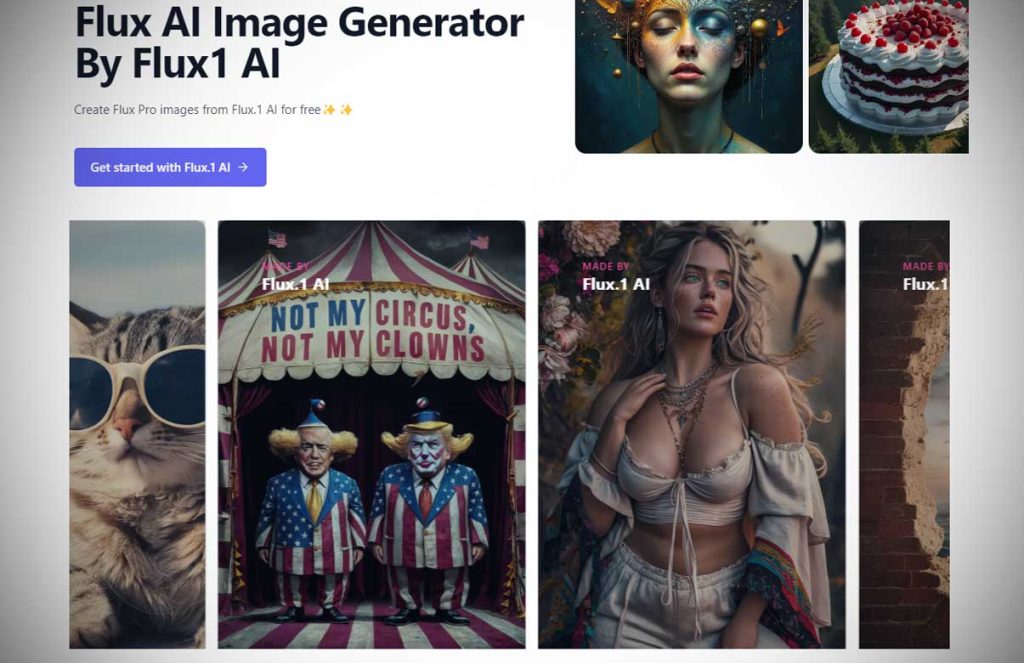What is Flux AI?
Overview of Flux AI
Flux AI, developed by the innovative startup Black Forest Labs, is an open-source image generation model that has been making waves in the tech community. Launched with little fanfare, it quickly gained traction and is now being hailed as a leading contender in the realm of AI-generated imagery. Unlike its competitors such as Midjourney and DALL-E, which often require hefty subscriptions or specific hardware, Flux AI can run on moderately powerful laptops, making it accessible to a wider audience. With its ability to create stunningly realistic images from text prompts, this tool has revolutionized how we think about digital art and photography.
The technology behind Flux AI employs advanced diffusion models that allow users to generate images that are not only visually striking but also rich in detail. The platform includes three different versions: Pro, Dev, and Schnell. Each caters to various needs—ranging from commercial applications to rapid prototyping for developers—making it versatile for both casual users and professionals alike. Users have reported that when using Flux AI, especially in combination with fine-tuning scripts like Lora from XLabs, the results can be almost indistinguishable from real photographs at first glance.
The Team Behind Flux AI
The brains behind Flux AI come from a stellar background in artificial intelligence development. Founded by former engineers at Stability AI—Robin Rombach, Andreas Blattmann, and Dominik Lorenz—the team brings a wealth of experience in creating cutting-edge generative models. Their expertise is evident not just in the functionality of Flux AI, but also in its underlying architecture which allows for rapid advancements and improvements based on user feedback.
This German-based company aims to push the boundaries of creativity through their state-of-the-art tools. They believe that making Flux AI open-source will encourage innovation among developers who can modify and enhance the model according to their needs. As they continue expanding their offerings—including plans for a text-to-video model—their commitment remains clear: democratizing access to high-quality generative media tools while fostering creativity across industries.

Why Flux AI is Going Viral
Ultra-Realistic Image Generation
The standout feature driving the virality of Flux AI is undoubtedly its ultra-realistic image generation capabilities. In an era where visual content reigns supreme—from social media posts to advertising campaigns—the ability to create lifelike images quickly becomes invaluable. Early adopters have shared their experiences on platforms like Reddit and Twitter, showcasing breathtaking results that blur the lines between reality and digital art.
A key aspect contributing to this realism lies within its advanced algorithms that focus on rendering human features with remarkable fidelity. While some users note minor inconsistencies—like unnatural skin textures or odd patterns—the overall impression is overwhelmingly positive. The potential applications are vast; businesses can leverage these images for marketing materials without needing costly photoshoots or stock photo licenses.
| User Feedback Highlights | Description |
|---|---|
| Lifelike Portraits | “The portraits generated were so realistic I had trouble believing they weren’t actual people!” – User Review |
| Diverse Applications | “Using these images for my blog transformed my content completely.” – Content Creator Testimonial |
| Evolving Technology | “With each update, it feels like I’m getting even better results.” – Frequent User Comment |
User-Friendly Interface

An equally compelling reason for its viral success is how user-friendly Flux’s interface proves to be—even for those who might not consider themselves tech-savvy. After all, what good is powerful technology if it’s too complicated? Black Forest Labs designed Flux with accessibility in mind; whether you’re downloading it locally or using it through platforms like NightCafe or Poe, navigating through options feels intuitive.
This ease of use extends beyond mere navigation; numerous resources are available online—from tutorials on installation via Pinokio launcher to community forums where users share tips and tricks on maximizing output quality with Flux models. This supportive ecosystem helps newcomers feel more comfortable experimenting with image generation without fear of overwhelming complexity.
5 Reasons Flux AI is the New King of Image Generation
1. Open-Source Advantage
The most compelling feature of Flux AI is its open-source nature, which sets it apart from many competitors in the image generation landscape. Developed by Black Forest Labs, this innovative tool allows anyone to access and modify the underlying code. This means that users can customize the model according to their specific needs or even integrate it into other applications. The freedom to tinker with such sophisticated technology fosters a vibrant community of developers and enthusiasts who are continuously enhancing its capabilities.
This open-source approach not only democratizes access but also accelerates innovation. With more eyes on the code, bugs can be identified and resolved more quickly while new features can be developed based on user feedback. As a result, Flux AI is poised to evolve rapidly, keeping pace with advancements in machine learning and image processing techniques.
This accessibility has encouraged collaboration across various platforms as well; users have already begun sharing custom models and fine-tuning scripts that further enhance the realism of images generated by Flux AI. For instance, pairing Flux with XLabs’ Lora script has led to stunningly realistic results, blurring the line between digital art and photography.
2. Versatility in Applications
Flux AI isn’t just about creating jaw-dropping images; it’s about versatility too! Whether you’re a graphic designer looking for unique visuals or a marketer seeking eye-catching content for social media, Flux delivers across various domains. The three versions available—Pro, Dev, and Schnell—cater to different user needs: from commercial use to personal experimentation.
The Pro version is particularly appealing to businesses as it comes with a commercial license, enabling companies to incorporate generative images into their offerings seamlessly. Meanwhile, individual users can explore creative projects without breaking the bank thanks to free options available for local installation or online access through platforms like NightCafe and Poe.
This adaptability makes Flux AI an invaluable tool not just for artists but also for industries such as advertising, gaming, and even education! Imagine using ultra-realistic images in training simulations or virtual environments—all possible with this powerful generator at your fingertips.
3. Community Support
The strength of any open-source project lies in its community—and Flux AI has a thriving one! From forums dedicated to troubleshooting issues to social media groups where users share tips and tricks, there’s no shortage of support available for those diving into the technology. This collaborative atmosphere encourages knowledge sharing among users at all skill levels.
The developers behind Flux AI, including former engineers from Stability AI like Robin Rombach and Dominik Lorenz, actively engage with the community as well. Their commitment ensures that updates are informed by real-world usage scenarios rather than solely theoretical considerations. This direct line of communication between developers and users enhances trust while fostering a sense of ownership over the software’s evolution.
Additionally, numerous tutorials are popping up online—from YouTube videos showcasing practical applications to blog posts detailing advanced techniques—helping newcomers get started on their journey with Flux AI. In essence, you’re never alone when exploring this exciting frontier!
4. Rapid Development Cycle
Flux AI‘s development cycle is impressively rapid compared to traditional software models—a testament to its agile framework rooted in modern principles. Since its viral launch, updates have been rolling out frequently, based on user feedback and technological advances in the field of artificial intelligence.
This nimble approach means enhancements are implemented quickly; whether it’s fixing bugs, introducing new features, or improving rendering capabilities, users see changes reflected almost immediately after they are announced! It’s not uncommon for those involved in its creation (many hailing from backgrounds steeped in cutting-edge research) to push significant improvements in weeks rather than the months or years typical of closed systems.
This fast-paced environment keeps things exciting—not only does it allow early adopters to access newer functionalities faster, but it also positions Flux AI as a frontrunner capable of adapting swiftly amidst fierce competition from established players like Midjourney and DALL-E!

